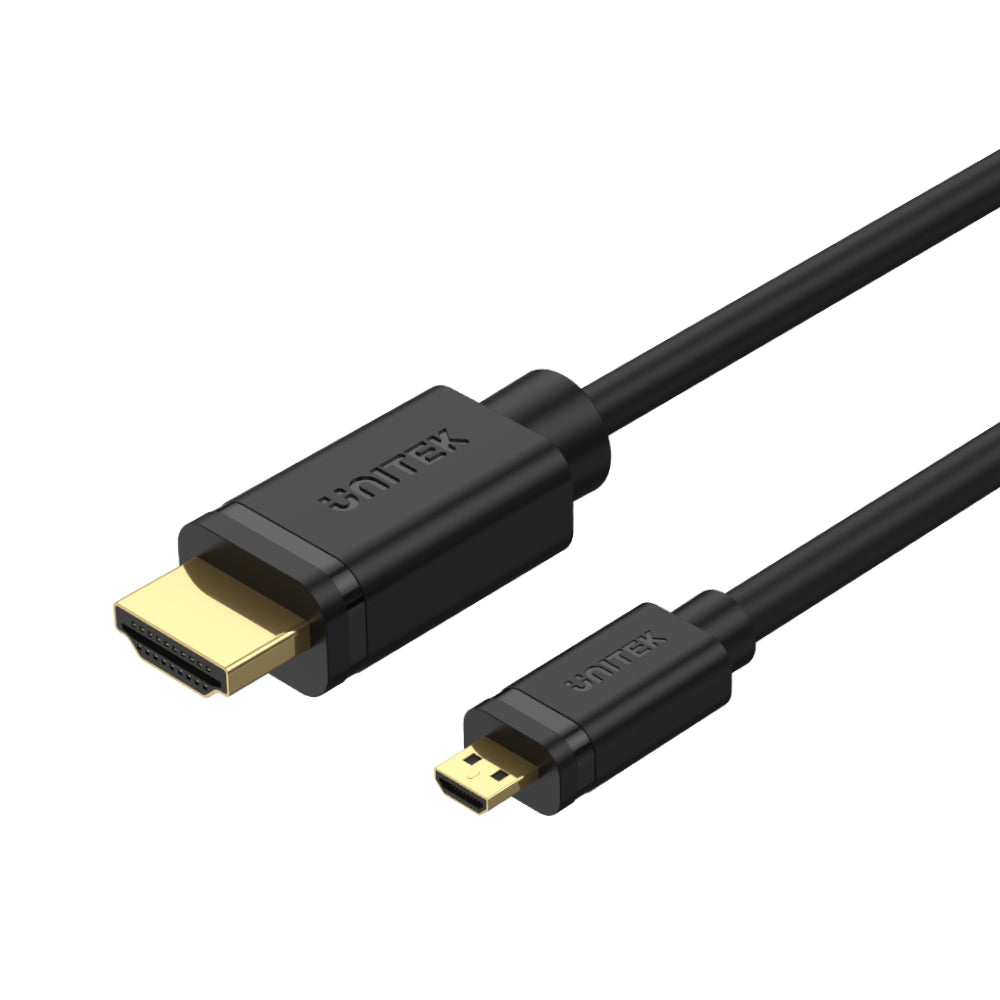








4K 60Hz 고속 마이크로 HDMI-HDMI 케이블
Enhance your multimedia experience with the UNITEK Micro HDMI Cable, designed to deliver stunning 4K UHD visuals and immersive 3D gaming. Crafted from premium materials, this cable maximizes performance, providing you with the ideal sensory enjoyment for all your entertainment needs.

4K 60Hz Bi-Directional Micro HDMI to HDMI Cable
Enjoy ultra-high-definition 4K@60Hz visuals and 3D content with this premium bi-directional Micro HDMI to HDMI 2.0 cable. Designed for seamless connection between devices like computers, tablets, action cameras, camcorders, Raspberry Pi 4, TVs, and monitors, it features gold-plated connectors, triple shielding, and supports HDR10, HDCP 2.2, 7.1 surround sound, and Ethernet channel for stable, cinema-quality performance.

Easily Identify Your HDMI Port: Standard, Micro, or Mini
Quickly check your device’s HDMI port size with this simple guide. Standard HDMI (Type A) and Micro HDMI (Type D) are supported—ensure you select the right cable for your source device. Mini HDMI (Type C) is not compatible with this cable.

4K 60Hz Ultra HD Streaming & Entertainment
Experience vibrant 4K@60Hz visuals and rich detail with 18Gbps bandwidth. This cable supports HDCP 2.2 for seamless streaming of Ultra HD content from Netflix, Prime Video, and more, making it perfect for media, surfing, and entertainment needs.

Ultrapro Sensory Enjoyment with Advanced HDMI Features
Experience vibrant HDR10 visuals, immersive 7.1 surround sound, Audio Return Channel for flexible connectivity, and Ethernet Channel for seamless data streaming—all in one premium cable.

Premium Build for Reliable Performance
Engineered with gold-plated connectors, copper conductors, and triple shielding—including braid and foil layers—this cable ensures superior signal quality and durability. The robust PVC jacket adds extra protection, making it ideal for high-performance 4K entertainment.

Effortless Plug & Play Micro HDMI Connection
Easily connect your camera to a display via Micro HDMI—no setup needed. Enjoy instant, high-quality visuals on the big screen for seamless viewing and sharing.
| Max Output Resolution | 4K@60Hz |
|---|---|
| HDMI | 1(하류) |
| Micro HDMI | 1(상류) |
| Data transfer rate | 18Gbps |
| Cable Length | 2개월 |
| Cable Type | 마이크로 HDMI 대 HDMI |
| Material | Gold-Plated, PVC |
| Colour | Black |
- 1 x 마이크로 HDMI-HDMI 2.0 케이블
- 1 x 사용자 설명서
Choose options
